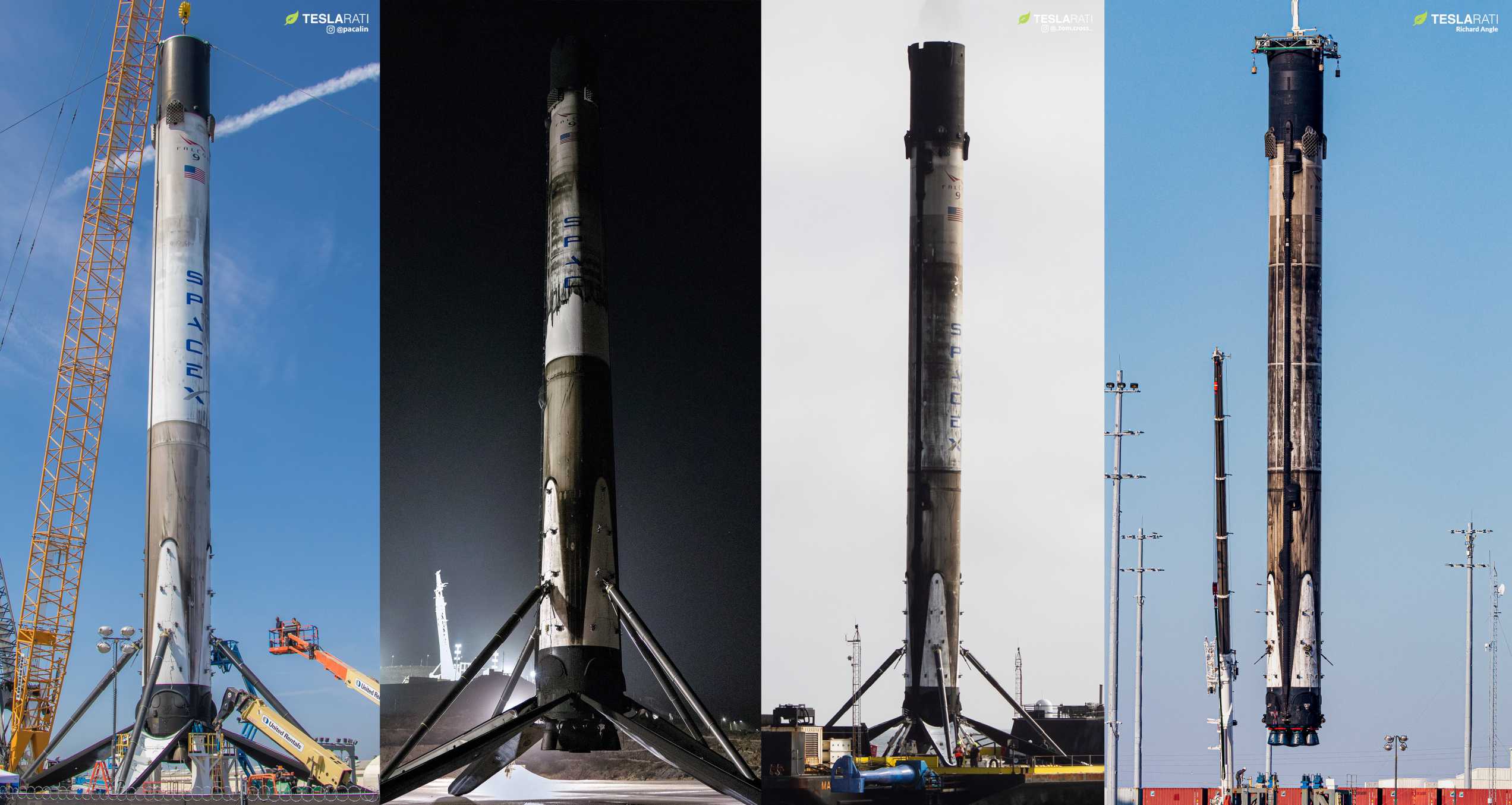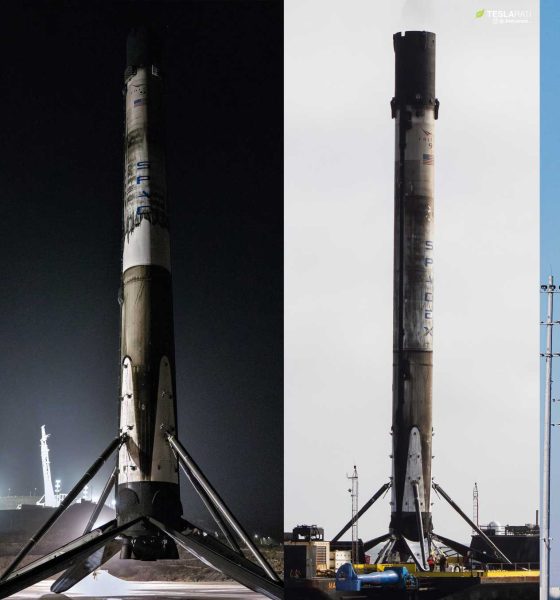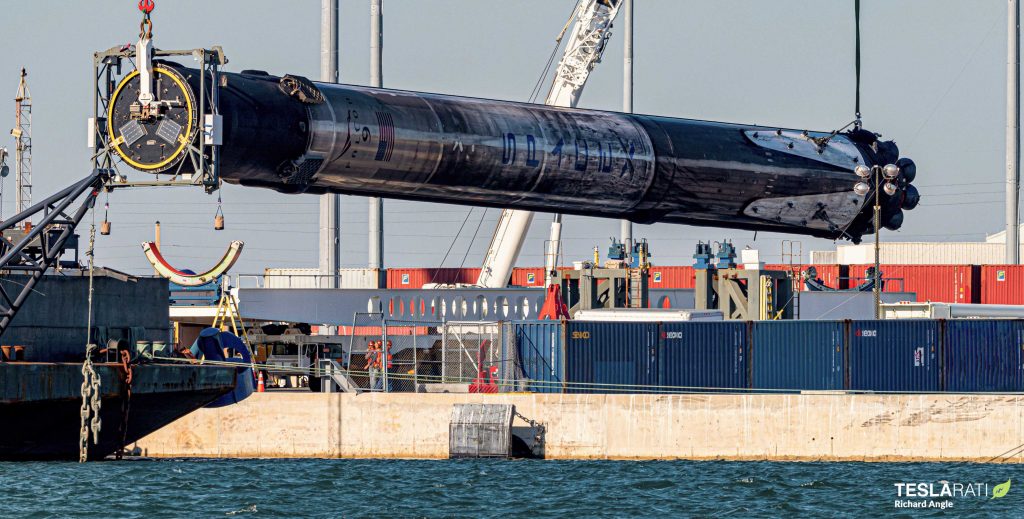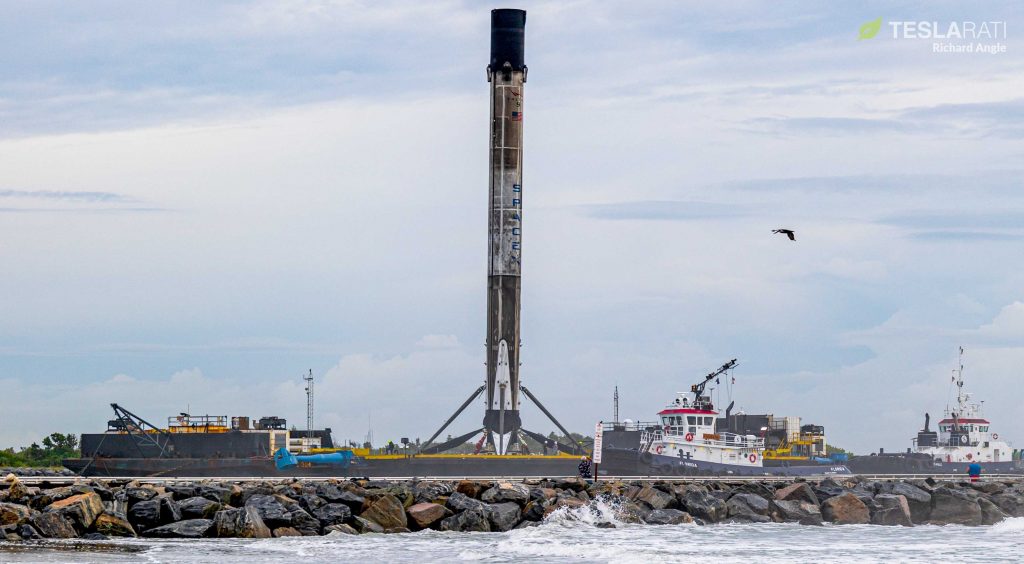

News
SpaceX's next Starlink launch to mark biggest rocket reusability milestone yet [webcast]
If everything goes as planned, SpaceX’s next 60-satellite Starlink launch will soon push the Falcon rocket family to the halfway point of its ambitious reusability design goals.
SpaceX has scheduled its sixth launch of 60 Starlink satellites no earlier than (NET) 9:42 am EDT (13:42 UTC) March 14th. Known as Starlink L6 or Starlink V1 L5 (referring to the fifth batch of upgraded v1.0 satellites), the Starlink mission will be the SpaceX’s fourth this year – a cadence that would enable up to 21 Starlink launches in 2020 alone. In other words, a successful launch this weekend would put SpaceX firmly on track to realize the repeated guidance that it would attempt 20-24 Starlink missions this year.
Given that SpaceX’s annual record stands at 21 launches and that the company has many additional non-Starlink launches planned for 2020, it’s always been clear that rocket reusability would be essential to even begin to approach the launch rates Starlink demands. Doing so without severely impacting customer missions – almost certainly an unacceptable tradeoff for SpaceX – is even more of a challenge. Thankfully, with its very next launch, SpaceX is about to push the rocket reusability envelope yet again, hopefully proving that the Falcon family is halfway to realizing its design goals.

SpaceX’s final iteration of the Falcon launch vehicle – known as its Block 5 upgrade – flew for the first time in May 2018 and has performed another 27 missions in 22 months since. When it debuted, SpaceX CEO Elon Musk spoke in depth about the Block 5 upgrade and the significant changes it introduced, stating that it primarily focused on improving reliability and reusability. Notably, every single Falcon 9 Block 5 rocket produced from then on would be virtually identical to the select few boosters destined to launch astronauts, meaning that all future SpaceX launches would directly benefit from the changes NASA required.

However, arguably the biggest public focus of Block 5 upgrade would be the upgrades it brought for SpaceX’s reusable rocketry program, with Musk describing it as a cumulative product of half a decade spent attempting to land rocket boosters. The big claim: Falcon Block 5 boosters would theoretically be capable of at least ten launches apiece with minimal to no repairs in between. After reaching 10-launch milestones, Musk further noted that boosters could potentially use periodical overhauls – much like modern aircraft – to achieve 100 or more launches apiece before retirement.
Eleven months after SpaceX launched and landed the same rocket for the third time, Falcon 9 booster B1048 became the first to complete four launches and landings, placing the first 60 Starlink v1.0 satellites in orbit in November 2019. Less than two months later, Falcon 9 B1049 matched its predecessor’s record, becoming the second booster to launch four times.


Now, according to Next Spaceflight, pathfinder Falcon 9 booster B1048 is scheduled to launch for the fifth time in support of Starlink L6 – a bit less than four months after it became the first SpaceX rocket to cross the fourth-flight milestone. Just days ago, SpaceX President and COO Gwynne Shotwell revealed that Falcon boosters might never need to fly more than ten times. Given that Falcon 9 Block 5 boosters were first and foremost designed to launch no less than ten times each, B1048 is now on the brink of reaching the halfway point of one SpaceX’s most ambitious Block 5 design goals.
If B1048 (and B1049 shortly after that) can prove that Falcon boosters can successfully launch five times, it’s hard to imagine any technical showstoppers that could prevent SpaceX from achieving its self-imposed ten-flight milestone. With SpaceX likely to attempt anywhere from 10-20 more Starlink launches this year, there will be no shortage of opportunities for Falcon 9 to continue pushing the envelope of reusability.
Tune in around 15 minutes before liftoff to catch SpaceX’s Starlink L6 launch live this Saturday, pending a successful Falcon 9 static fire test later today.
Check out Teslarati’s Marketplace! We offer Tesla accessories, including for the Tesla Cybertruck and Tesla Model 3.

News
Tesla FSD fleet is nearing 7 billion total miles, including 2.5 billion city miles
As can be seen on Tesla’s official FSD webpage, vehicles equipped with the system have now navigated over 6.99 billion miles.

Tesla’s Full Self-Driving (Supervised) fleet is closing in on almost 7 billion total miles driven, as per data posted by the company on its official FSD webpage.
These figures hint at the massive scale of data fueling Tesla’s rapid FSD improvements, which have been quite notable as of late.
FSD mileage milestones
As can be seen on Tesla’s official FSD webpage, vehicles equipped with the system have now navigated over 6.99 billion miles. Tesla owner and avid FSD tester Whole Mars Catalog also shared a screenshot indicating that from the nearly 7 billion miles traveled by the FSD fleet, more than 2.5 billion miles were driven inside cities.
City miles are particularly valuable for complex urban scenarios like unprotected turns, pedestrian interactions, and traffic lights. This is also the difference-maker for FSD, as only complex solutions, such as Waymo’s self-driving taxis, operate similarly on inner-city streets. And even then, incidents such as the San Francisco blackouts have proven challenging for sensor-rich vehicles like Waymos.
Tesla’s data edge
Tesla has a number of advantages in the autonomous vehicle sector, one of which is the size of its fleet and the number of vehicles training FSD on real-world roads. Tesla’s nearly 7 billion FSD miles then allow the company to roll out updates that make its vehicles behave like they are being driven by experienced drivers, even if they are operating on their own.
So notable are Tesla’s improvements to FSD that NVIDIA Director of Robotics Jim Fan, after experiencing FSD v14, noted that the system is the first AI that passes what he described as a “Physical Turing Test.”
“Despite knowing exactly how robot learning works, I still find it magical watching the steering wheel turn by itself. First it feels surreal, next it becomes routine. Then, like the smartphone, taking it away actively hurts. This is how humanity gets rewired and glued to god-like technologies,” Fan wrote in a post on X.
News
Tesla starts showing how FSD will change lives in Europe
Local officials tested the system on narrow country roads and were impressed by FSD’s smooth, human-like driving, with some calling the service a game-changer for everyday life in areas that are far from urban centers.

Tesla has launched Europe’s first public shuttle service using Full Self-Driving (Supervised) in the rural Eifelkreis Bitburg-Prüm region of Germany, demonstrating how the technology can restore independence and mobility for people who struggle with limited transport options.
Local officials tested the system on narrow country roads and were impressed by FSD’s smooth, human-like driving, with some calling the service a game-changer for everyday life in areas that are far from urban centers.
Officials see real impact on rural residents
Arzfeld Mayor Johannes Kuhl and District Administrator Andreas Kruppert personally tested the Tesla shuttle service. This allowed them to see just how well FSD navigated winding lanes and rural roads confidently. Kruppert said, “Autonomous driving sounds like science fiction to many, but we simply see here that it works totally well in rural regions too.” Kuhl, for his part, also noted that FSD “feels like a very experienced driver.”
The pilot complements the area’s “Citizen Bus” program, which provides on-demand rides for elderly residents who can no longer drive themselves. Tesla Europe shared a video of a demonstration of the service, highlighting how FSD gives people their freedom back, even in places where public transport is not as prevalent.
What the Ministry for Economic Affairs and Transport says
Rhineland-Palatinate’s Minister Daniela Schmitt supported the project, praising the collaboration that made this “first of its kind in Europe” possible. As per the ministry, the rural rollout for the service shows FSD’s potential beyond major cities, and it delivers tangible benefits like grocery runs, doctor visits, and social connections for isolated residents.
“Reliable and flexible mobility is especially vital in rural areas. With the launch of a shuttle service using self-driving vehicles (FSD supervised) by Tesla in the Eifelkreis Bitburg-Prüm, an innovative pilot project is now getting underway that complements local community bus services. It is the first project of its kind in Europe.
“The result is a real gain for rural mobility: greater accessibility, more flexibility and tangible benefits for everyday life. A strong signal for innovation, cooperation and future-oriented mobility beyond urban centers,” the ministry wrote in a LinkedIn post.
News
Tesla China quietly posts Robotaxi-related job listing
Tesla China is currently seeking a Low Voltage Electrical Engineer to work on circuit board design for the company’s autonomous vehicles.

Tesla has posted a new job listing in Shanghai explicitly tied to its Robotaxi program, fueling speculation that the company is preparing to launch its dedicated autonomous ride-hailing service in China.
As noted in the listing, Tesla China is currently seeking a Low Voltage Electrical Engineer to work on circuit board design for the company’s autonomous vehicles.
Robotaxi-specific role
The listing, which was shared on social media platform X by industry watcher @tslaming, suggested that Tesla China is looking to fill the role urgently. The job listing itself specifically mentions that the person hired for the role will be working on the Low Voltage Hardware team, which would design the circuit boards that would serve as the nervous system of the Robotaxi.
Key tasks for the role, as indicated in the job listing, include collaboration with PCB layout, firmware, mechanical, program management, and validation teams, among other responsibilities. The role is based in Shanghai.
China Robotaxi launch
China represents a massive potential market for robotaxis, with its dense urban centers and supportive policies in select cities. Tesla has limited permission to roll out FSD in the country, though despite this, its vehicles have been hailed as among the best in the market when it comes to autonomous features. So far, at least, it appears that China supports Tesla’s FSD and Robotaxi rollout.
This was hinted at in November, when Tesla brought the Cybercab to the 8th China International Import Expo (CIIE) in Shanghai, marking the first time that the autonomous two-seater was brought to the Asia-Pacific region. The vehicle, despite not having a release date in China, received a significant amount of interest among the event’s attendees.








